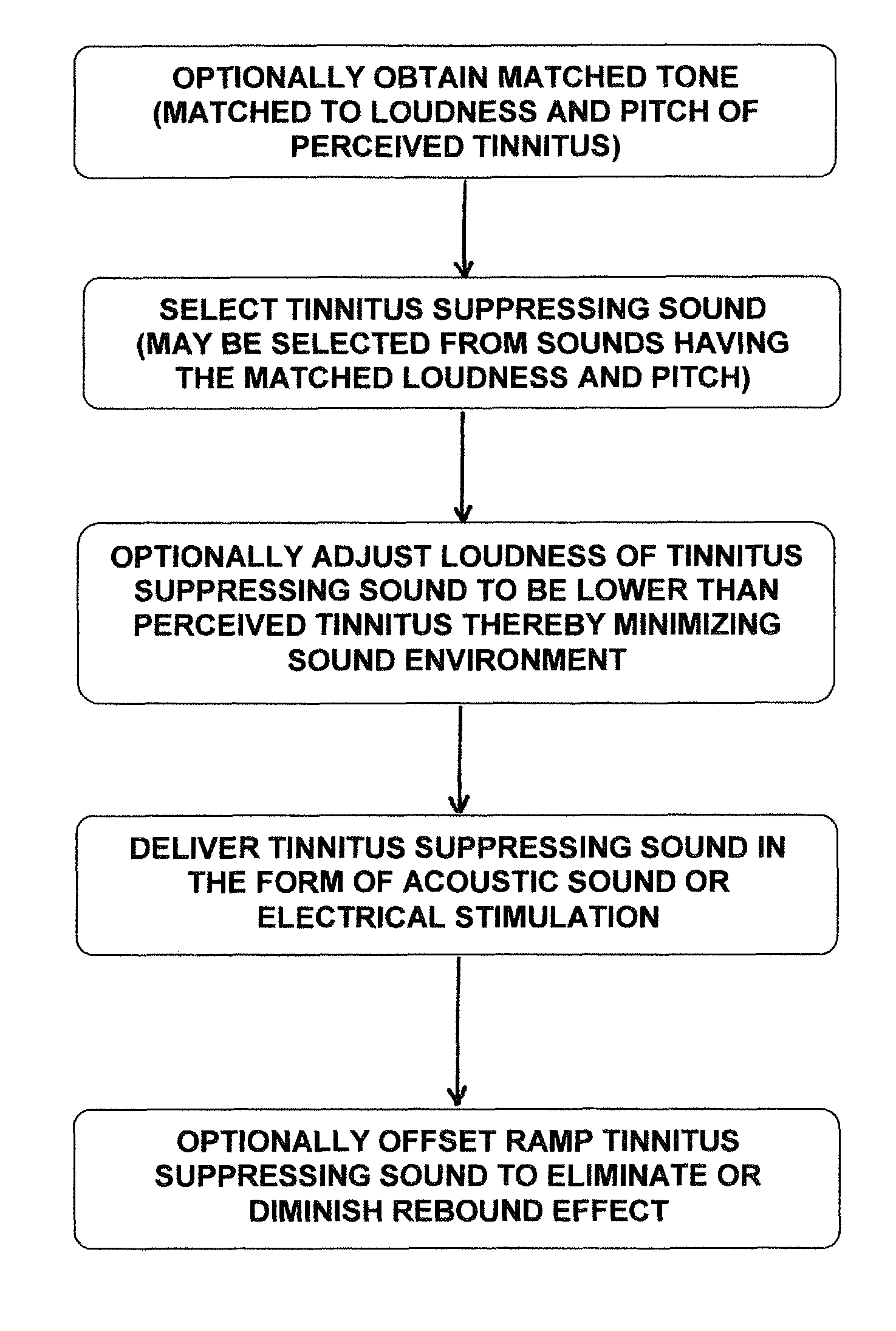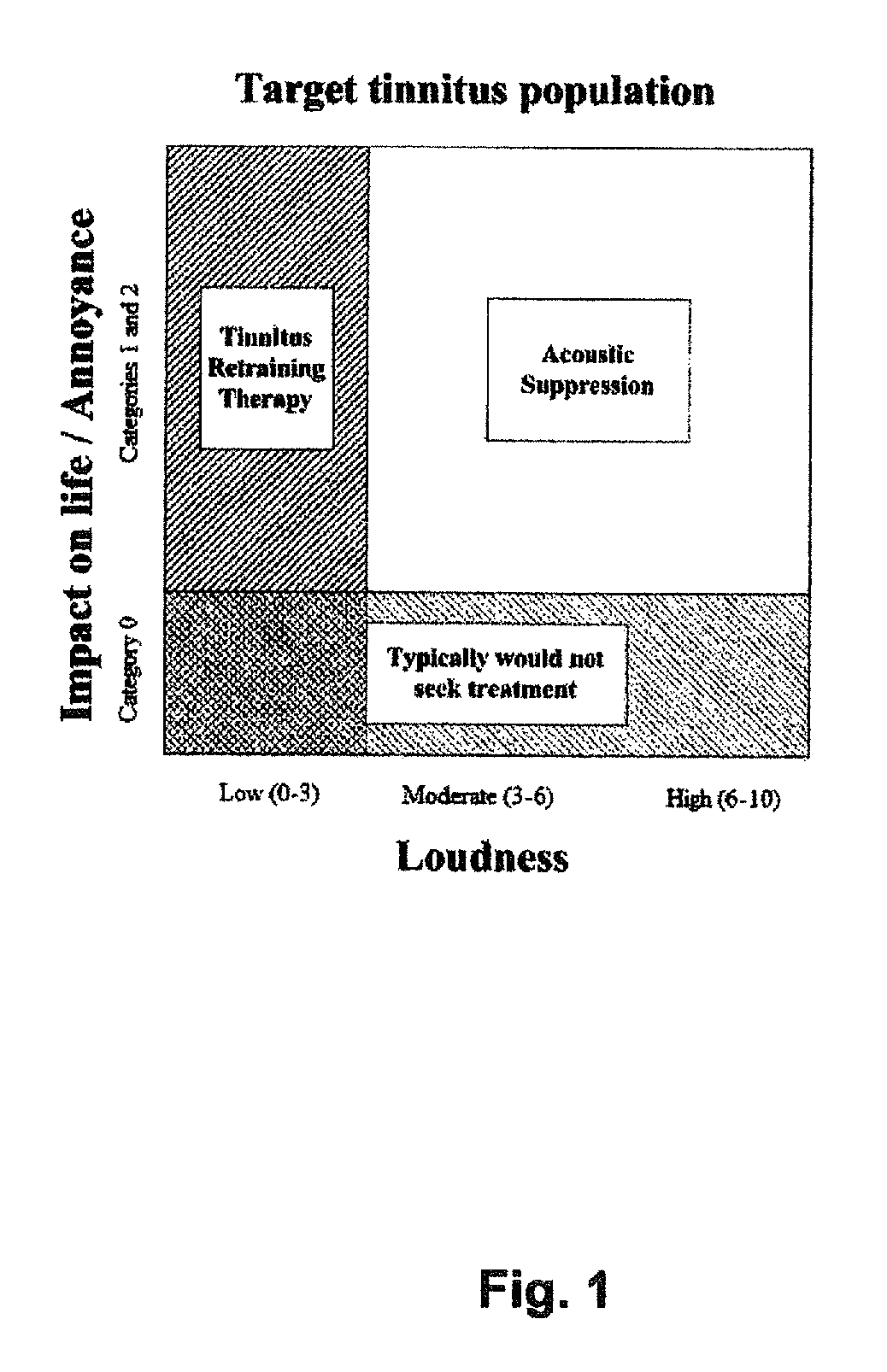Devices and methods for suppression of tinnitus
a technology of tinnitus and masking, applied in the field of biomedical devices and methods, can solve the problems of no effective treatment to ameliorate tinnitus, no effective treatment of tinnitus, and poor suppression effect of masking methods, so as to achieve effective suppression of tinnitus, suppress tinnitus, and suppress tinnitus.
- Summary
- Abstract
- Description
- Claims
- Application Information
AI Technical Summary
Benefits of technology
Problems solved by technology
Method used
Image
Examples
example 1
[0045]In this example, two adults with unilateral continuously high-level tinnitus were identified and tested. Subject AS1 has had tinnitus for 2.5 years, a moderate loss of 50 dB at 8 kHz, ranks the tinnitus to be 7 of 10 loud, and matches the tinnitus to an 8-kHz, 70-dB SPL pure tone in the contralateral ear. AS1 is thus a Category 1 unilateral High (see FIG. 1). Subject AS2 has had tinnitus for 1.5 years, a hearing loss of 25-40 dB at 4-8 kHz, ranks the tinnitus to be 5 of 10, and matches the tinnitus to a 7-kHz, 69-dB SPL pure tone in the contralateral ear. AS2 is a Category 1 unilateral Moderate.
[0046]FIG. 3 shows loudness estimate for both tinnitus and the external sound as a function of the sound duration. An 8-kHz tone presented at 80 dB SPL can totally mask AS1's tinnitus (upper left panel). An 8-kHz tone presented at 60 dB SPL can partially mask the tinnitus from 7 to 4 loud (middle left panel). However, the same tone presented 60 dB SPL (2 loud), if amplitude-modulated by...
PUM
 Login to View More
Login to View More Abstract
Description
Claims
Application Information
 Login to View More
Login to View More - R&D
- Intellectual Property
- Life Sciences
- Materials
- Tech Scout
- Unparalleled Data Quality
- Higher Quality Content
- 60% Fewer Hallucinations
Browse by: Latest US Patents, China's latest patents, Technical Efficacy Thesaurus, Application Domain, Technology Topic, Popular Technical Reports.
© 2025 PatSnap. All rights reserved.Legal|Privacy policy|Modern Slavery Act Transparency Statement|Sitemap|About US| Contact US: help@patsnap.com



